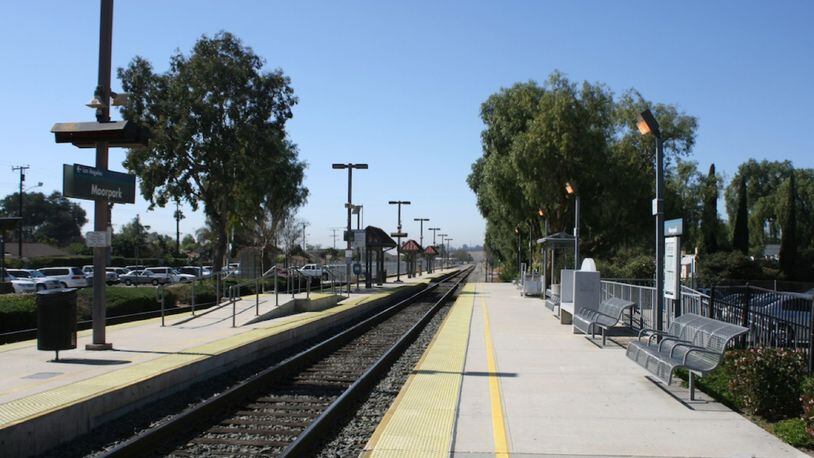Oxford will commit $350,000 to construction of the platform.
Miami Senior Vice President for Finance and Business Services sent a letter to the mayor on Wednesday indicating Miami’s commitment of $350,000 to the project as well.
INITIAL REPORT, Dec. 27:
Oxford may spend as much as $350,000 to support a planned Amtrak stop in the city.
The proposed Oxford stop would be on Amtrak’s Cardinal Line, which runs from New York to Chicago. It comes through Oxford in the early morning hours three mornings a week — Monday, Thursday and Saturday before heading to Chicago and Tuesday, Thursday and Saturday before heading to New York — but there is a possibility of expansion of service as part of the Hoosier State Line that connects Indianapolis and Chicago.
The Hoosier State Line runs on the days the Cardinal Line does not. Operators of that line are looking at expanding their service to Cincinnati, which could then include Oxford, according to Alan Kyger, the city’s economic development director.
Currently, local people seeking to ride the Cardinal Line can board it in Cincinnati or in Connersville, Ind., which is about 25 miles from Oxford.
After hearing a presentation Dec. 20 outlining the work by the seven-member Joint Miami-Oxford Amtrak Committee, members of Oxford City Council all expressed support for having an Amtrak stop in the city and said they were willing to spend money on the project.
“The committee’s goal from the start was to bring an Amtrak stop to the Oxford and Miami communities at the soonest time possible, at the best location available and at the most affordable cost possible, ” Kyger said during his presentation to council. “The Cardinal Route goes through a sniglet of Ohio and we are lucky that sniglet goes through Oxford.”
The presentation included the type of platform and shelter Amtrak typically plans for the stop Oxford would offer. Construction estimates range from $1 million to $1.3 million for the 300-foot train platform, an open-air canopy or shelter and access sidewalks.
Kyger asked the city to provide up to $350,000 in funding and consider participating in the platform management and operations.
Council member Edna Southard asked if there would be any form of income to the city with a stop here.
Lee Fisher, who is a member of the committee and retired after 37 years of railroad employment, said income would all be Amtrak’s.
“Amtrak bears the expense of that train and they keep the proceeds from that train,” Fisher said.
David Prytherch, chairman of the city planning commission, said the local economy would benefit from the Amtrak stop.
“Like any other infrastructure, it will bring people to Oxford,” he said. “We are not likely to get an interstate (highway) nearby.”
Randi Thomas, director of institutional relations at Miami and a member of the Amtrak committee, said he has made a similar presentation to Miami officials and the committee hopes both the city and university will show they “have skin in the game” with financial support.
Mayor Kate Rousmaniere said a resolution would be written to that effect and on the agenda for council’s Jan. 3 meeting.
Kyger pointed to the work which has been done on the idea going back two years and said they hope, someday, to have an even better facility but what is now being considered is a major step.
“We would like to have a better stop, but, first, we want to get a stop,” he said, adding that the committee has investigated several potential site locations.
One potential location was the Miami Valley Lumber property on South College Avenue. That site seemed promising because of the side track located there, but that detail actually became an issue because CSX railroad wants to use that track.
“The track is owned by CSX and it all must go through CSX,” Kyger said.
Construction of a platform would be on CSX property and would have to meet certain specifications because passenger and freight trains have different specifications, he said.
Two other potential local sites were considered: one immediately north and one immediately south of Chestnut Street.
Amtrak officials visited and determined the one north of Chestnut at the former BP facility was the least desirable because a train would block either Main Street or Chestnut Street when stopped.
The area south of Chestnut adjacent to Talawanda Local Schools’ Nelson-Morrow Building on Collins Run Road was considered the best option by the committee.
Also in that vicinity is the former Talawanda High School site now owned by Miami University and used as a parking lot. The area would provide a location for restrooms as well as parking for train riders.
About the Author
